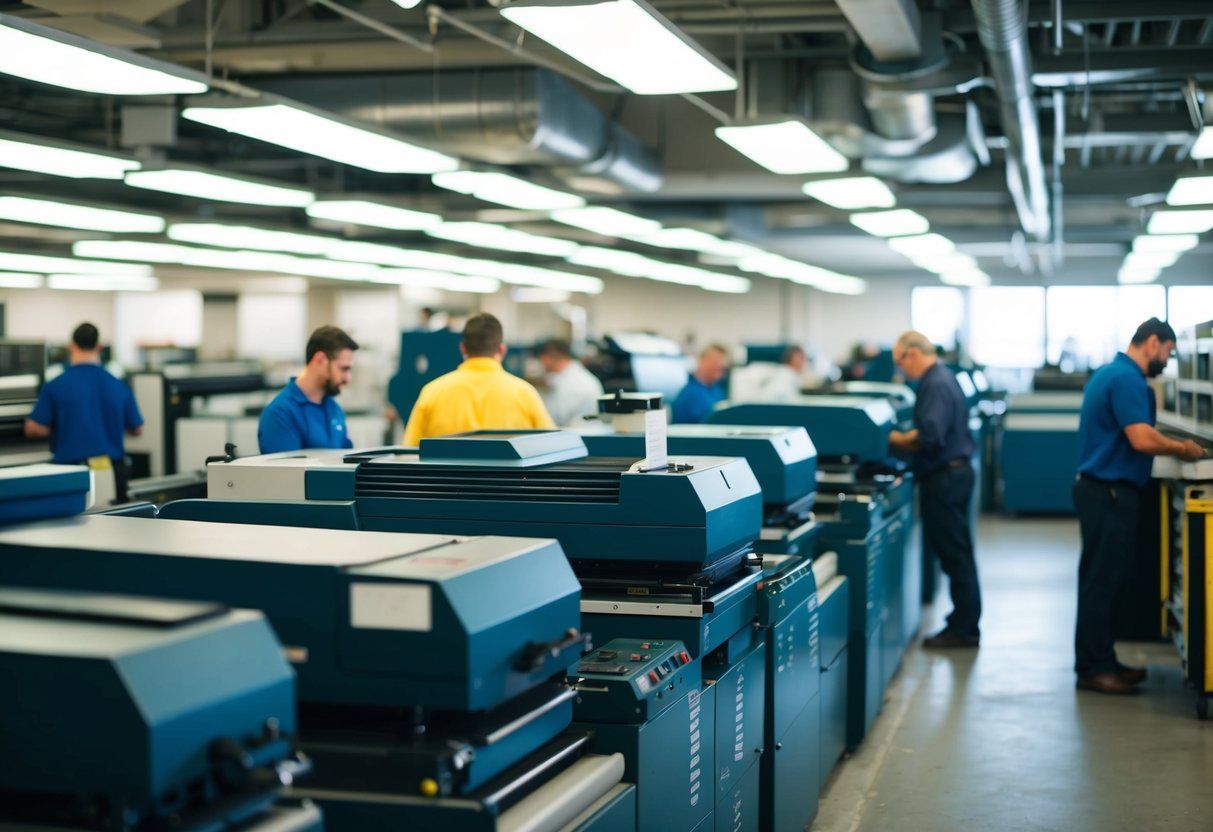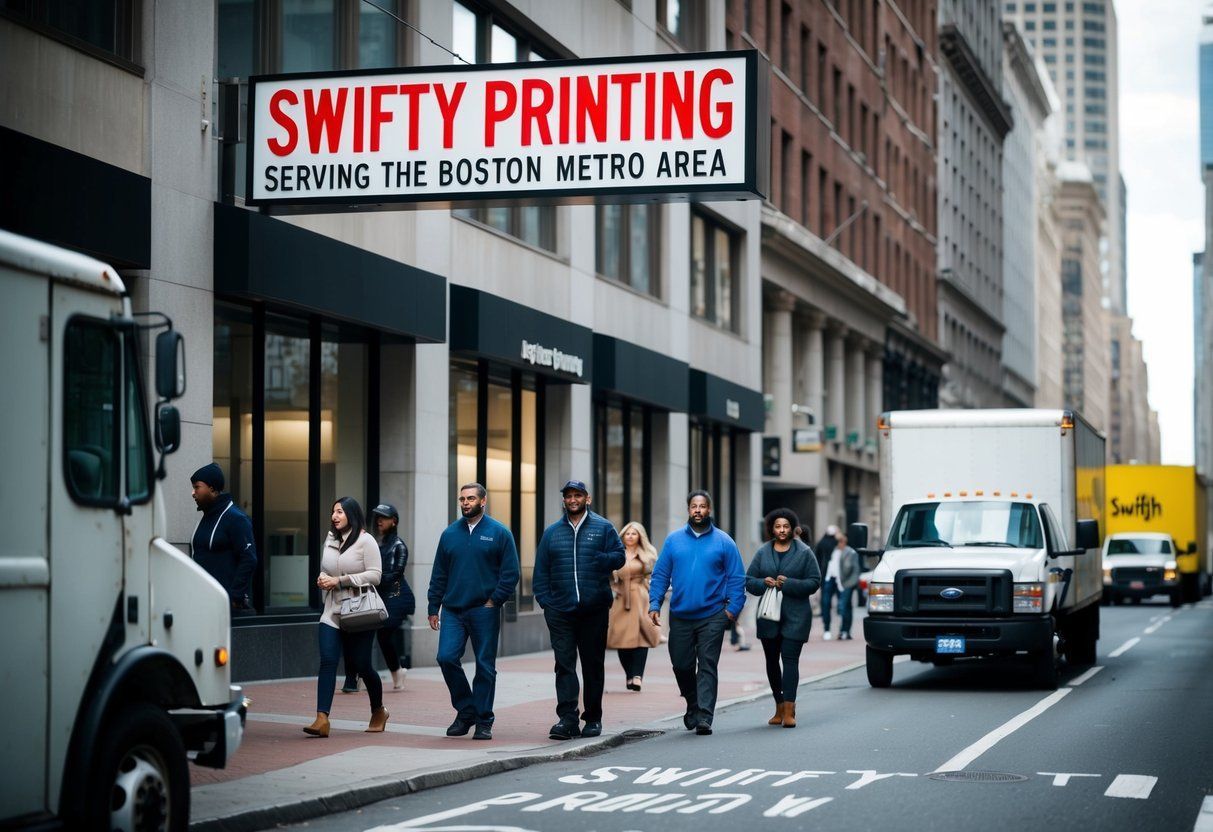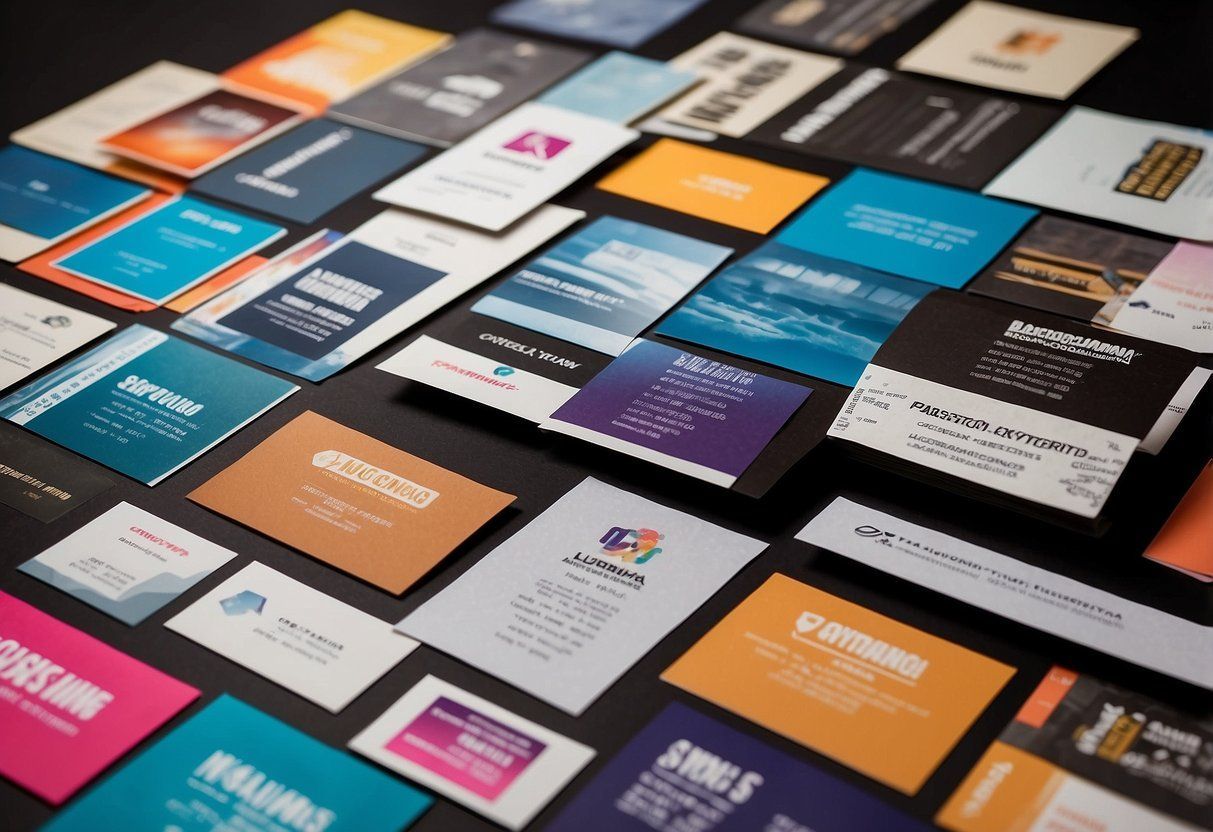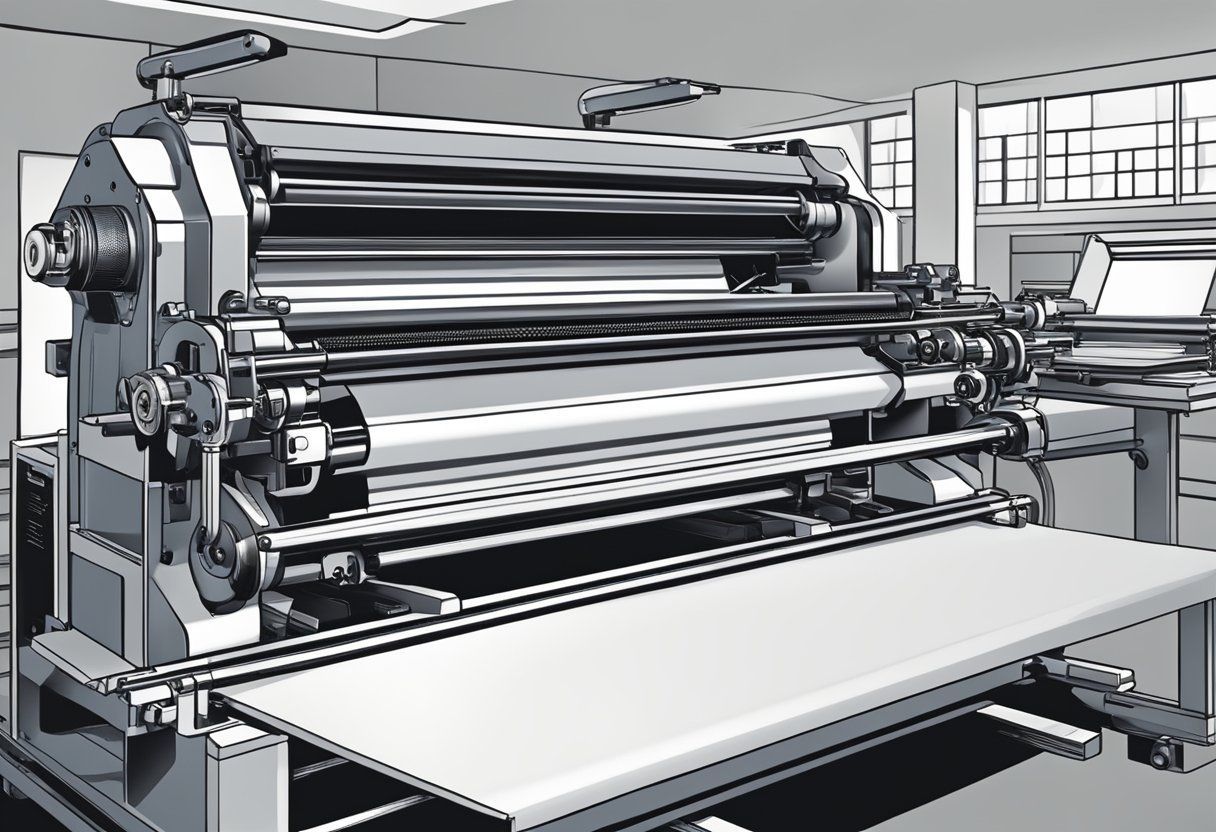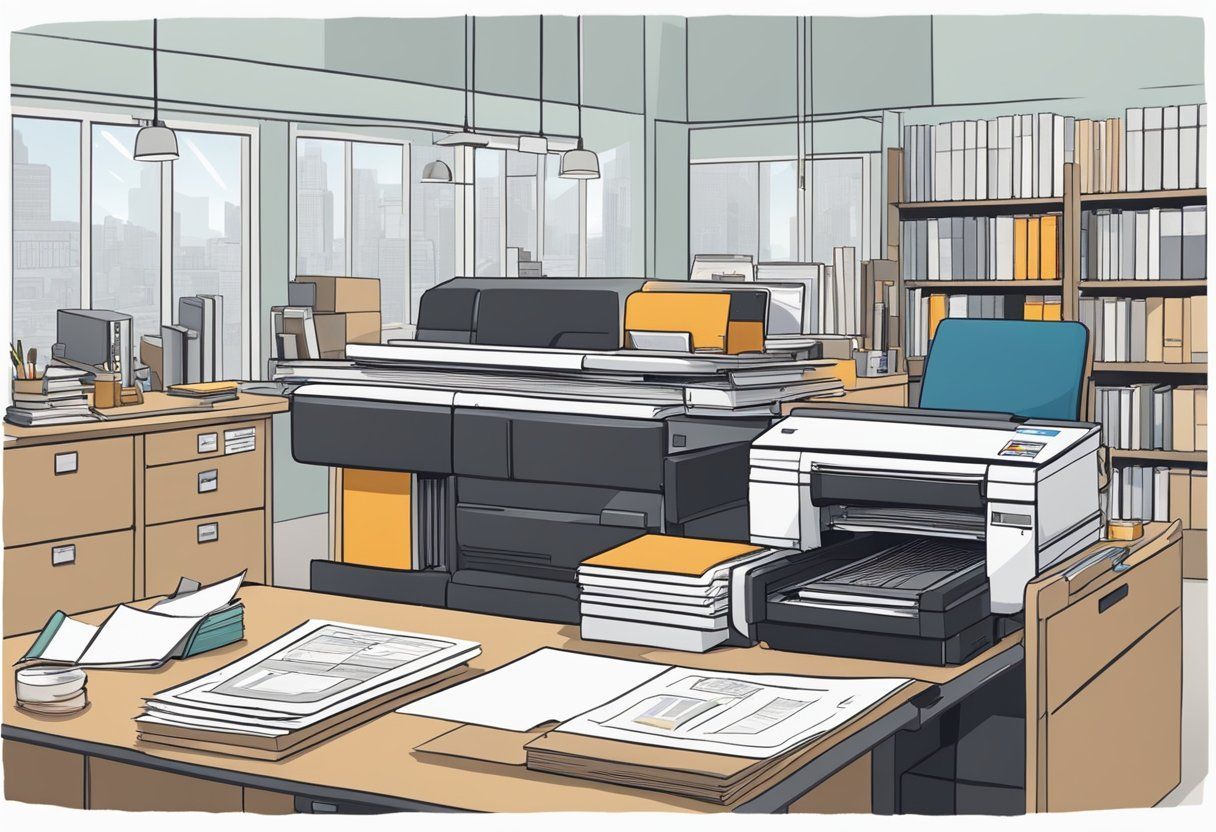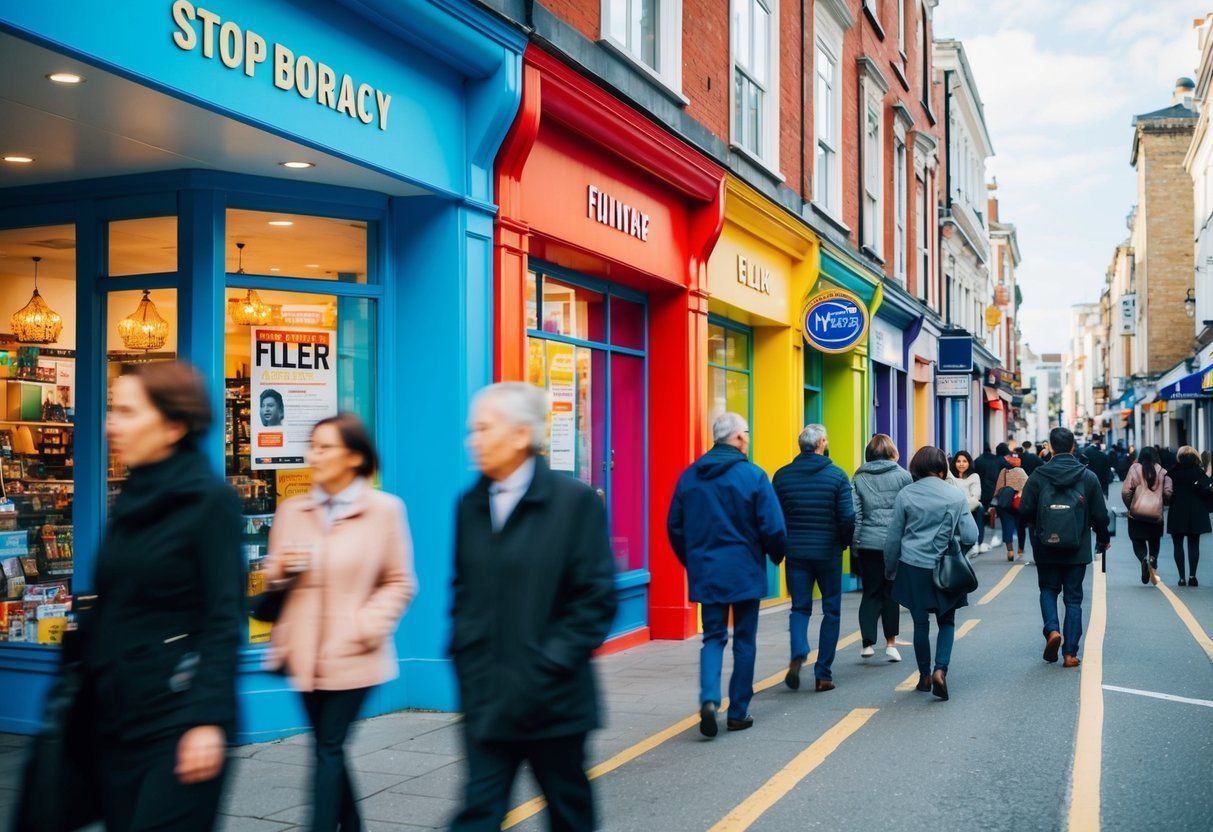Understanding Print Finishes: A Guide to Glossy, Matte, and More
Print finishes can make all the difference in the look and feel of printed materials. From business cards to brochures, the finish can impact the overall impression and effectiveness of the design. Understanding the characteristics of different print finishes is essential for achieving the desired outcome.
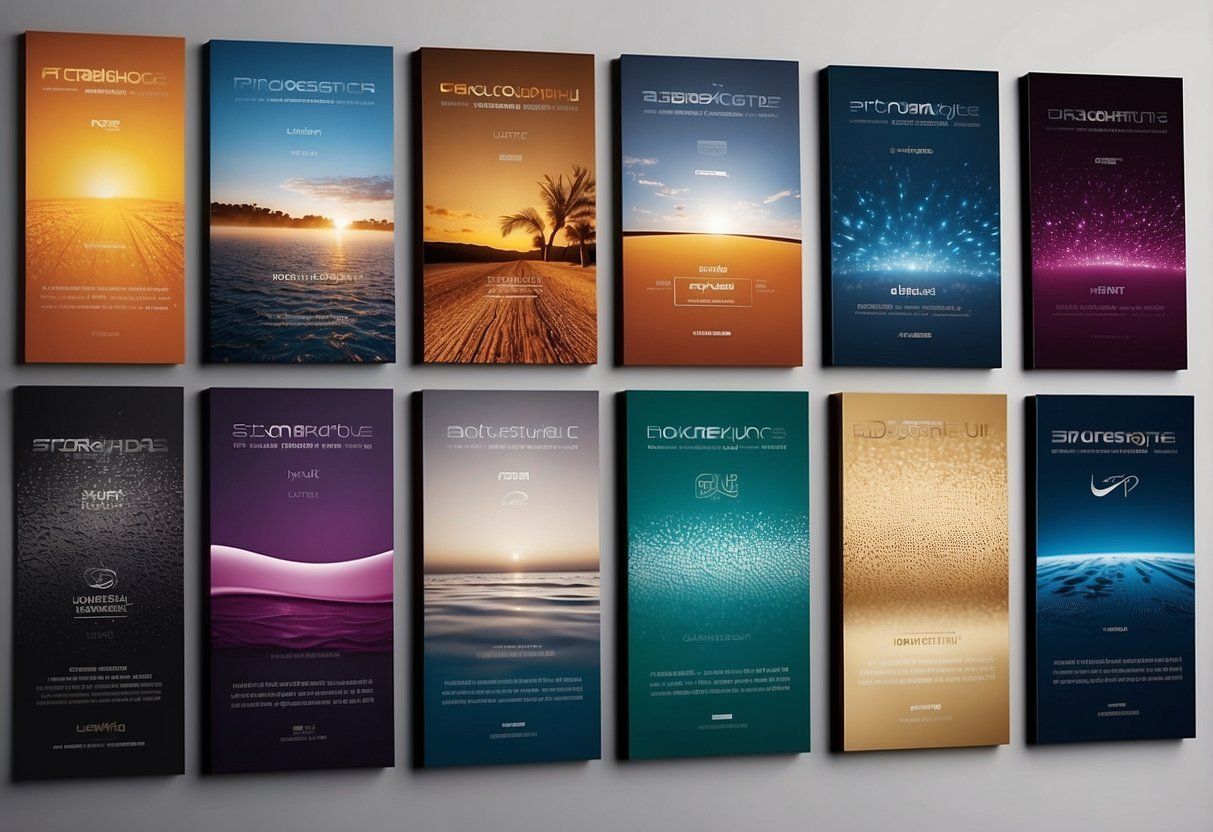
The Basics of Print Finishes
Print finishes are applied to printed materials after the ink has dried. They can enhance the appearance, texture, and durability of the printed piece. The most common finishes are glossy and matte, but there are also specialized finishes that can create unique effects. Each finish has its own set of characteristics and choosing the right one can make a big difference in the final product.
Key Takeaways
- Print finishes can significantly impact the look and feel of printed materials.
- Glossy and matte finishes are the most common, but specialized finishes can create unique effects.
- Understanding the characteristics of different finishes is essential for achieving the desired outcome.
The Basics of Print Finishes
Understanding Finish
Print finishes refer to the surface texture of a printed material. The finish can be glossy, matte, or have a texture. A print finish can affect the look and feel of a printed piece, which can impact the overall impression it makes on the viewer.
Matte vs Glossy
Matte finishes have a non-reflective surface, which can give a printed piece a more subdued and sophisticated look. In contrast, glossy finishes have a reflective surface that can make colors appear more vibrant and images more vivid. The choice between matte and glossy finishes often comes down to personal preference and the intended use of the printed piece.
Beyond Glossy and Matte
While glossy and matte finishes are the most common types of print finishes, there are many other options available. Some finishes have a texture, such as a linen or canvas finish, which can add depth and interest to a printed piece. Other finishes, such as spot UV or foil stamping, can add contrast and shine to specific areas of a design.
When choosing a print finish, it’s important to consider the intended use of the printed piece and the impression you want to make on the viewer. A knowledgeable printer can help you choose the best finish for your project.
Characteristics of Glossy Finish
Glossy finish is a popular print finish that adds a high level of shine and reflection to printed materials. This finish is often used for printing photographs, brochures, and other marketing materials. Here are some key characteristics of glossy finish:
Visual Appeal and Shine
Glossy finish is known for its vibrant colors and high shine. It adds a layer of depth to images, making them appear more vivid and eye-catching. This finish is particularly effective for printing images with bright colors, as it helps to enhance their vibrancy and make them stand out.
Reflection and Glare
One of the main features of glossy finish is its reflective surface. This can be both a positive and negative attribute, depending on the intended use of the printed material. Glossy finish can create a mirror-like effect, which can be distracting in certain lighting conditions. However, it can also be used to create a sense of depth and dimensionality in printed images.
Fingerprints and Dust
One potential downside of glossy finish is that it can be prone to fingerprints and dust. The reflective surface of this finish can make smudges and other imperfections more visible, which can detract from the overall visual appeal of the printed material. However, this can be mitigated by using high-quality glossy paper and taking care to handle printed materials with clean hands.
In summary, glossy finish is a popular print finish that adds a high level of shine and reflection to printed materials. It is particularly effective for printing images with bright colors, as it helps to enhance their vibrancy and make them stand out. However, it can be prone to fingerprints and dust, which can detract from the overall visual appeal of the printed material.
Characteristics of Matte Finish
Texture and Depth
Matte finish is a non-reflective surface that is soft to the touch and has a subtle, elegant texture. Unlike glossy finishes, matte finishes absorb more light, which creates a sense of depth and richness in the colors of the printed material. This makes matte finishes a popular choice for printing photographs and other images where texture and depth are important.
Subtle Aesthetic and Durability
Matte finishes have a subtle aesthetic that is perfect for creating a sophisticated and elegant look. They are also more durable than glossy finishes, as they are less likely to show smudges and scratches. This makes them a great choice for products that will be handled frequently, such as business cards or packaging.
Handling and Care
When handling matte finished products, it is important to take care to avoid smudging or scratching the surface. Unlike glossy finishes, matte finishes are more absorbent and can be damaged by excess moisture or oils from fingerprints. To keep matte finished products looking their best, it is recommended to handle them with clean, dry hands and store them in a protective sleeve or cover.
Overall, matte finishes offer a unique and sophisticated look that is both durable and practical. Whether printing on matte paper or using a matte finish on a product, this finish is a great choice for those looking for a non-reflective surface that is resistant to fingerprints and scratches.
Choosing Between Glossy and Matte
When it comes to choosing between a glossy or a matte finish for your prints, there are a few factors to consider. In this section, we’ll explore the different aspects of personal preference, professional presentation, longevity, and maintenance to help you make an informed decision.
Personal Preference and Usage
One of the most important factors to consider when choosing between a glossy or matte finish is personal preference. Glossy finishes tend to have a more vibrant and saturated look, while matte finishes have a more subdued and natural look. It ultimately comes down to the individual’s taste and the intended usage of the print.
For example, glossy finishes may be preferred for photographs of landscapes or cityscapes, where the vibrant colors can really pop. On the other hand, matte finishes may be preferred for portraits or wedding photos, where a more natural and soft look is desired.
Professional Presentation
Another important factor to consider is the professional presentation of the print. Glossy finishes tend to have a more professional and polished look, while matte finishes have a more casual and artistic look.
For professional settings, such as art exhibitions or galleries, glossy finishes may be preferred for their sleek and professional appearance. However, for more personal settings, such as photo albums or scrapbooking, matte finishes may be preferred for their more artistic and natural look.
Longevity and Maintenance
Finally, it’s important to consider the longevity and maintenance of the print. Glossy finishes tend to be more susceptible to fingerprints, smudges, and scratches, while matte finishes are more resistant to these types of damage.
For prints that will be handled frequently or displayed in areas with high traffic, such as a family photo album, a matte finish may be preferred for its durability and resistance to damage. On the other hand, glossy finishes may be preferred for prints that will be displayed in a more controlled environment, such as a framed photograph on a wall.
Ultimately, the choice between a glossy or matte finish comes down to personal preference and the intended usage of the print. By considering factors such as professional presentation, longevity, and maintenance, you can make an informed decision that will result in a print that meets your needs and expectations.
Specialized Print Finishes
Satin and Luster Finishes
Satin and luster finishes are perfect for those who want a subtle sheen to their prints. These finishes are sophisticated and classic, adding a visual impact to any print. Satin finishes offer a depth and vibrancy to colors, making them pop in a subtle way. Luster finishes, on the other hand, add an artistic touch to prints, making them look more textured and sharp. Both finishes offer dimension and a natural look to prints.
When it comes to production, satin and luster finishes are achieved by adding a special coating to the paper finish. Aesthetic preferences and personal taste play a big role in choosing between the two finishes. Satin finishes are perfect for those who want an eye-catching print without being too flashy, while luster finishes are great for those who want their art prints to have more color saturation and imperfections.
Metallic and Pearl Finishes
Metallic and pearl finishes are perfect for those who want a well-lit print with high visibility. These finishes add sharpness and dimension to prints, making them look more luxurious. Metallic finishes are perfect for black and white prints, as they add a special touch to the printing process. Pearl finishes, on the other hand, are great for brochures and photo finishes, as they add a subdued look to prints.
When it comes to color clarity, metallic and pearl finishes offer excellent contrast and color saturation. They are perfect for landscapes and prints that require a lot of detail. These finishes also resist scratches and offer an under-stated aesthetic that has a timeless appeal.
UV Coating and Soft Touch
UV coating and soft touch finishes are perfect for those who want a print that is both eye-catching and durable. UV coating adds a layer of protection to prints, making them more resistant to moisture and scratches. Soft touch finishes, on the other hand, add a luxurious feel to prints, making them more tactile.
When it comes to lighting, UV coating and soft touch finishes offer excellent contrast and visibility. They are perfect for prints that require a lot of detail and sharpness. These finishes are great for framing and offer a luxurious touch to any print.
Impact of Lighting on Print Finishes
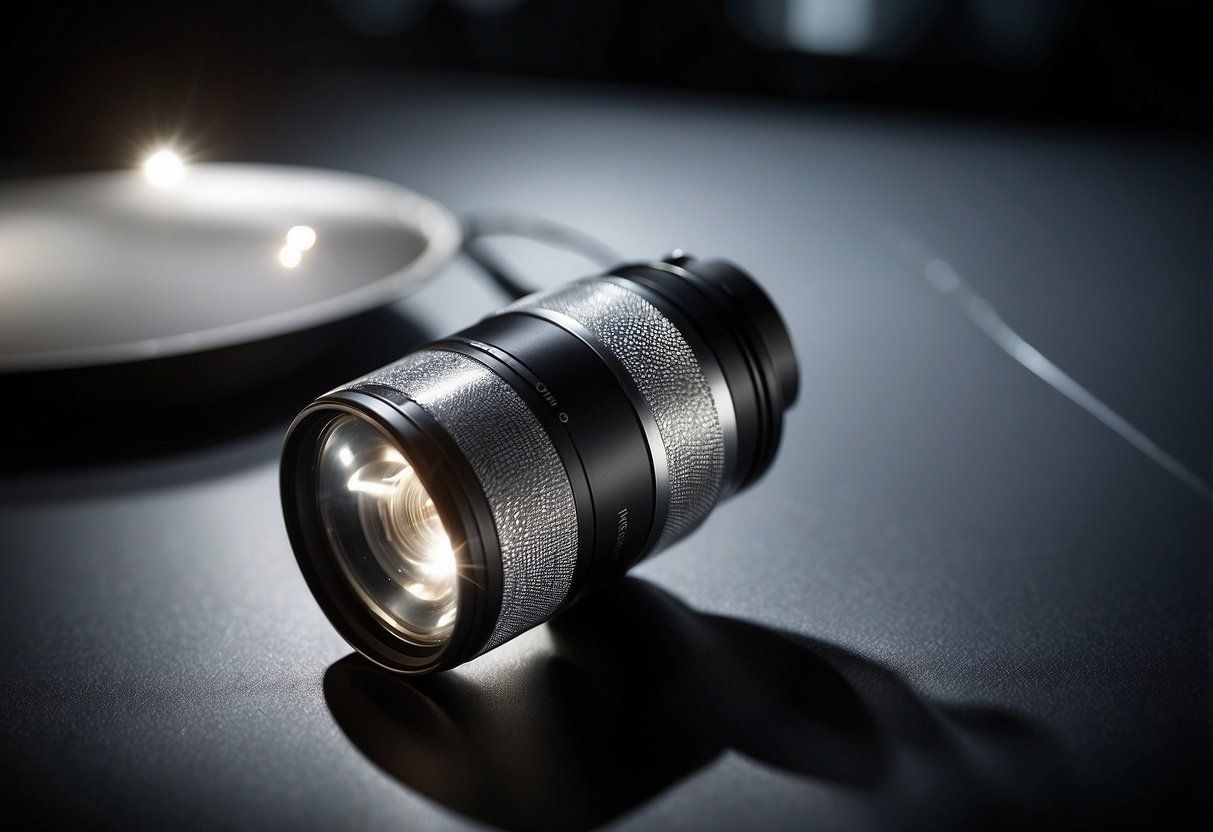
Gallery and Exhibition Considerations
The impact of lighting on print finishes is a crucial factor to consider when displaying prints in a gallery or exhibition. Lighting can affect the visibility, color accuracy, and overall appearance of prints. When choosing a print finish, it is essential to consider the lighting conditions in which the prints will be displayed.
In galleries and exhibitions, the lighting is often well-lit and controlled to showcase the artwork. The use of natural light should be avoided as it can cause the print finish to appear differently than intended. For example, glossy finishes can reflect light, causing glare and making the print difficult to see.
To avoid this, matte finishes are often preferred as they reduce glare and provide a more even distribution of light. However, it is important to note that matte finishes can also reduce color saturation and contrast, which may not be ideal for some prints.
Home and Office Display
The impact of lighting on print finishes is also relevant for home and office display. In these settings, the lighting conditions may not be as controlled as in a gallery or exhibition. Natural light and other light sources can affect the appearance of the print finish.
When displaying prints at home or in an office, it is important to consider the direction of the light source. Prints with glossy finishes should be displayed in areas with low light and little reflection, while matte finishes can be displayed in areas with more natural light.
It is also important to consider the color temperature of the light source. Warm light can make prints appear more yellow, while cool light can make prints appear bluer. Choosing a print finish that complements the lighting conditions in the display area can enhance the overall appearance of the print.
In conclusion, the impact of lighting on print finishes is significant and should be considered when choosing a print finish for display. The lighting conditions in the display area can affect the visibility, color accuracy, and overall appearance of the print. By choosing a print finish that complements the lighting conditions, the print can be displayed in its best possible light.
Print Finish and Photography
Choosing Finishes for Different Photo Styles
When it comes to printing photographs, the finish can make a significant difference in the final product’s visual appeal. Depending on the photo style, different finishes can enhance certain aspects of the photograph. For example, glossy finishes work well for vibrant and colorful photos, while matte finishes are ideal for black and white photography.
For artistic portraits, a glossy finish can highlight the details and bring out the vivid colors in the photograph. On the other hand, a matte finish can give the photograph a smooth and sophisticated look, perfect for framing and displaying in a gallery setting.
Wedding photos and photo albums require archival quality, ensuring that the images remain sharp and vibrant for years to come. In this case, a glossy finish may be the best option to preserve the color saturation and sharpness of the photographs.
Black and White vs Color Photography
When it comes to black and white photography, matte finishes are the preferred choice. The lack of color in the photograph means that a glossy finish would not enhance any vibrant colors. Instead, a matte finish can give the photograph a classic and timeless look, perfect for artistic and dramatic portraits.
Color photography, on the other hand, can benefit from a glossy finish, which enhances the color saturation and sharpness of the photograph. Glossy finishes can bring out the vibrancy in the photograph, making it perfect for displaying in a photo album or framing for display.
In conclusion, choosing the right finish for a photograph depends on the photo style and the desired visual appeal. Whether it’s a glossy or matte finish, the goal is to enhance the photograph’s overall quality and make it visually appealing to the viewer.
Frequently Asked Questions
What are the benefits of using glossy finish for photos?
Glossy finish is known for providing a shiny and reflective surface to printed materials. This finish is ideal for printing photos as it enhances the colors and contrast of the image, making it appear more vibrant and eye-catching. Additionally, glossy finish is resistant to fading and smudging, which ensures that the photo remains in good condition for a long time.
How does matte finish paper impact the quality of printed materials?
Matte finish paper has a non-reflective surface that provides a more subdued and natural look to printed materials. This finish is ideal for printing documents, brochures, and other materials where a professional and understated look is desired. Matte finish paper does not enhance the colors of the image, but it does provide a softer and more muted tone that is easy on the eyes.
In what situations is a matte photo finish preferable to a glossy one?
Matte photo finish is preferable in situations where the photo will be viewed in different lighting conditions, such as under bright sunlight or fluorescent lighting. Glossy finish can reflect light and cause glare, which can make it difficult to view the photo. Matte finish, on the other hand, does not reflect light, making it easier to view the photo in any lighting condition.
What are the durability differences between glossy and matte printed products?
Glossy finish is more durable than matte finish as it is resistant to fading, smudging, and water damage. However, glossy finish is prone to scratches and fingerprints, which can detract from the overall appearance of the printed material. Matte finish, on the other hand, is less durable than glossy finish as it is more susceptible to fading and water damage.
How do glossy and matte finishes affect the colors in printed photos?
Glossy finish enhances the colors and contrast of the image, making it appear more vibrant and eye-catching. Matte finish, on the other hand, provides a more subdued and natural look to printed materials. Matte finish does not enhance the colors of the image, but it does provide a softer and more muted tone that is easy on the eyes.
Can the choice of finish affect the visibility of fingerprints and smudges on printed materials?
Yes, the choice of finish can affect the visibility of fingerprints and smudges on printed materials. Glossy finish is prone to fingerprints and smudges, which can detract from the overall appearance of the printed material. Matte finish, on the other hand, is less prone to fingerprints and smudges, making it ideal for materials that will be handled frequently.…
